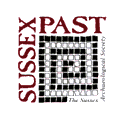Sussex Archaeological Collections: Relating to the history and antiquities of the counties of East and West Sussex
Sussex Archaeological Society, 2000. (updated 2022) https://doi.org/10.5284/1000334. How to cite using this DOI
Data copyright © Sussex Archaeological Society unless otherwise stated
This work is licensed under the ADS Terms of Use and Access.
Primary contact
Jaime
Kaminski
Sussex Archaeological Society
Barbican House
169 High Street
Lewes
BN8 1YE
Resource identifiers
- ADS Collection: 285
- DOI:https://doi.org/10.5284/1000334
- How to cite using this DOI
Southwick Roman villa
Its discovery, excavation, public display and eventual loss - a cautionary tale
by DAVID R. RUDLING and G. JEFF LEIGH
This paper provides a history of the discovery, excavation, attempts at interpretation, public display, ownership, and eventual loss/general destruction of one of the most important archaeological sites to have been found in Sussex: a large early Roman villa (or 'mini-palace') at Southwick. It is ultimately a very sad story, beginning with various very poorly recorded excavations in the 19th century before eventual large-scale but still poorly documented excavations and then public display in the 1930s. Ultimately, in the 1950s, the lack of adequate financial resources resulted in the then owners and guardians of the villa, the Sussex Archaeological Trust, deciding to sell the site for building development. Also sad is the fact that most of the finds recovered from the various 19th- and 20th-century excavations are not kept in museums; instead, many finds were given away or not retained. We recount this sorry and cautionary tale, but also provide the results of recent research including the 'discovery' and now publication of two important 19th-century excavation plans.





